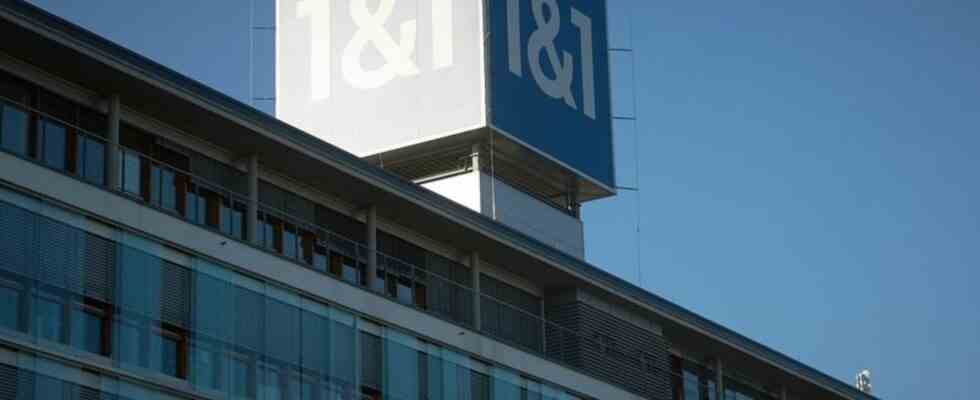cellular
1&1 boss wants frequency allocation instead of auction
The telecommunications company wants to break new ground in the allocation of mobile radio frequencies. photo
© picture alliance / Thomas Frey/dpa
The state took in a whopping 6.5 billion euros at an auction of Mobilunk frequencies in 2019. It is still unclear whether the next frequency auction will take place in 2024. A newcomer demands to break new ground.
Ralph Dommermuth, the boss of the telecommunications company 1&1, calls for a waiver of the billion-euro government auctions that have been used up until now for the allocation of mobile radio frequencies. There should be an “industrial solution” in which the four providers share the frequencies by negotiation among themselves. “I prefer to invest the money in the network instead of spending it on frequencies,” Dommermuth told dpa in Montabaur. “Under the supervision of the Federal Network Agency, the four network operators should agree on a fair distribution.” He is interested in low frequencies – in the 700, 800 and 900 megahertz range – which have a large range and are important for supply in rural areas.
At the beginning of 2026, spectrum that was previously used by Telekom, Vodafone and Telefónica (O2) will be free. In the future, however, there will not only be three, but four mobile network operators in Germany. Because in the summer of 2023, 1&1 wants to activate its own new network for mobile phone customers. In the future, the network will transmit at higher frequencies (2.1 and 3.5 gigahertz), the usage rights for which the Federal Network Agency auctioned off in 2019 and which are particularly suitable for cities with high data requirements. At that time, the state received 6.5 billion euros from the four bidders. A waiver of a new auction would also mean a waiver of high state revenues.
No decision by the Federal Network Agency yet
The forthcoming award is about “lowband” frequencies that are important for area coverage. The Federal Network Agency has not yet decided whether there will be an auction again, an award for a fee or a completely different way.
Dommermuth now introduces another possibility into the discussion. However, the manager emphasizes that if the industry talks fail, there should be another auction. “In the past, the auction has proven to be a tried and tested way of distributing a scarce commodity.”
With a view to the frequencies, the top dogs Telekom, Vodafone and O2 are also against an auction. However, their attitude differs fundamentally in other aspects from that of the newcomer 1&1. They would prefer if the current rights of use were simply extended. But Dommermuth sees this critically. “This would obviously discriminate against 1&1, which would not be compatible with German law and EU law,” he says.
In the ranks of the long-established network operators, it is argued that 1&1 is still a tenant with Telefónica anyway – the newcomer would therefore have indirect access to the area frequencies. But Dommermuth rejects that. Like any other network operator, 1&1 also needs “low-band” frequencies. “That’s the piece of the puzzle that we’re still missing,” he says. “But of course we can turn the proposal around: 1&1 gets frequencies and one of the other three companies becomes a tenant with us.”
Dommermuth does not accept the argument that there is enough spectrum for three parties, but too little for four parties. “There are four networks in all major European countries, and there, too, there are exactly the same frequencies as in Germany.” In France, for example, there was no auction, but an industrial solution in which the spectrum was quartered and then awarded. That shows it would work.
1&1 has so far been a tenant at O2 and Vodafone
So far, 1&1 has been active as a so-called MVNO on the mobile phone market, as a “Mobile Virtual Network Operator” the company is a kind of tenant at O2 and Vodafone, 1&1 mobile phone customers are connected to these two networks. In the third quarter of 2023, the company’s own mobile network is to be activated for new customers, after which the current 11.4 million existing customers are to be gradually transferred to the company’s own network within two years. Where no 1&1 antennas are transmitting yet – and that will be in most of Germany in the initial phase – a “national roaming” contract applies, which enables an automatic connection to the O2 network.
According to Dommermuth, the expansion of the network is making good progress. In Karlsruhe, Mainz and Frankfurt, initial tests are being carried out with some customers who use mobile communications as a substitute for a DSL connection. A download speed of more than one gigabit is achieved and the latency – the response time – values of just three milliseconds. “We still have to scale and test further, but things are already looking very good today,” says Dommermuth. By the end of 2030, the 5G network from 1&1 must reach at least 50 percent of German households, according to network agency requirements. “We will probably reach this target much earlier,” says Dommermuth.

